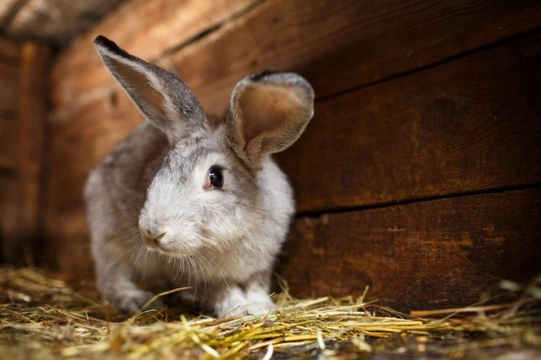
A hutch is not enough - Why rabbits should not be considered as an easy pet
While rabbits have been a common and popular pet for many years within the UK and further afield, it would be a mistake to think that rabbits are easy to care for or even that they are relatively hardy creatures. Historically, rabbits kept in captivity rarely made it to a ripe old age, due to the fact that they can be prone to a wide range of potential health problems and conditions that often went undiagnosed and untreated. Fortunately, how we care for rabbits and our understanding of their needs and health has increased greatly within the last twenty years, and pet owners have become much more adept at spotting the signs of ill health in rabbits. Also, rabbit owners nowadays are much more likely to view their rabbit as a ‘pet for life,’ and are much more willing to commit to seeking veterinary treatment for their rabbit instead of simply replacing them if they get ill.
Rabbits are exotic pets
With rabbits being near the top of the list of the most popular pets kept within the UK, people generally think of snakes, arachnids and tropical birds when they think of exotic pets rather than the humble rabbit. Nevertheless, rabbits are still considered in veterinary practice and in terms of their treatment to be an exotic pet. The delicate disposition of the rabbit, the range of illnesses and conditions that they can be prone to contracting, and the fact that their optimum care requirements are generally much more involved than the would-be owner first suspects, all contribute to their status and reputation as being rather more challenging to treat than cats and dogs. Because rabbits need to eat constantly and digest constantly in order to stay well, and because it is very hard to re-start the digestive process of the rabbit if it stalls, any surgical procedure or anything else requiring a general anaesthetic can be risky for the rabbit. Keeping the rabbit fed right up until surgery, dealing with the increased risk factors of operating on a pet with a full stomach, and encouraging the rabbit to begin eating again as soon as they are conscious, is all very challenging for the veterinary team. Add to this the extremely fast pulse rate of the rabbit that is sometimes almost impossible to count accurately, and rabbits’ predisposition to suffer from a wide range of often complex and difficult to treat problems, and it is no wonder that the rabbit is regarded as an exotic pet and treated accordingly; despite their popularity and ever increasing numbers!
A hutch is not enough
The practice of keeping rabbits in hutches originated in Victorian times, when live rabbits were stored in hutches for a couple of days at a time before making it into the stew! Rabbits were not kept as pets at this time, and no consideration was given to their health, welfare or longevity; after all, they were only supposed to live long enough to be fattened up for eating! Despite the fact that hutches were intended for short term storage as a convenient and relatively cheap piece of equipment, when rabbits began to rise in popularity as pets, hutches also made the jump with them and were considered to be the most appropriate way of providing accommodation for pet rabbits.In the wild, rabbits cover large swathes of ground every day, eating grass and going about their daily lives. The Rabbit Welfare Association and Fund (RWAF) states that the average wild rabbit covers a space around the size of thirty football pitches as part of their ‘territory’ in their life, and so it is little wonder that our domestic rabbits, which are closely related to their wild cousins, do not thrive in a small enclosed space.Up until the mid 1990’s, it was still considered to be perfectly acceptable to house rabbits in small enclosed hutches of just a couple of feet square, with no access to the outside world and not enough room to move about comfortably. Indeed, many of us who had pet rabbits as children or knew somebody who did, will remember this well. During the mid 1990’s the RWAF launched their ‘A hutch is not enough’ campaign, aimed at raising the profile of rabbit health and welfare, and educating the public about the true cost of owning a rabbit, the size of hutch that they need, and how to care for them properly. Veterinary practices, rabbit breeders and pet shops all got on board with the campaign, and the campaign, which is still very much underway today, has been largely responsible for a massive improvement in the health and welfare of the domestic rabbit population of the UK as a whole.
What kind of hutch is big enough, and what else is needed to keep rabbits?
The interior of a hutch that is comfortable for two rabbits should be at a minimum, six feet long by two feet wide by two feet high. Added to this, rabbits need to exercise, get out on the grass and stretch their legs, so providing a safely enclosed run attached to the hutch is also vital. The run should be at least eight feet long by four feet wide by two feet high- and this is a bare minimum. Remember that rabbits love to jump and hop, and can cover large areas of ground when bounding about, so the larger the hutch and run that you can provide for them, the better.



